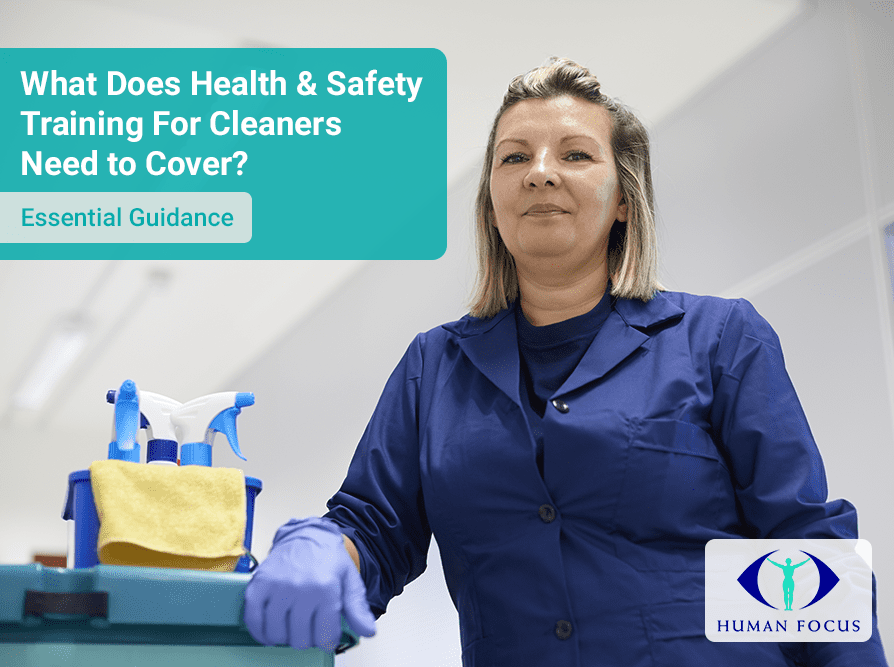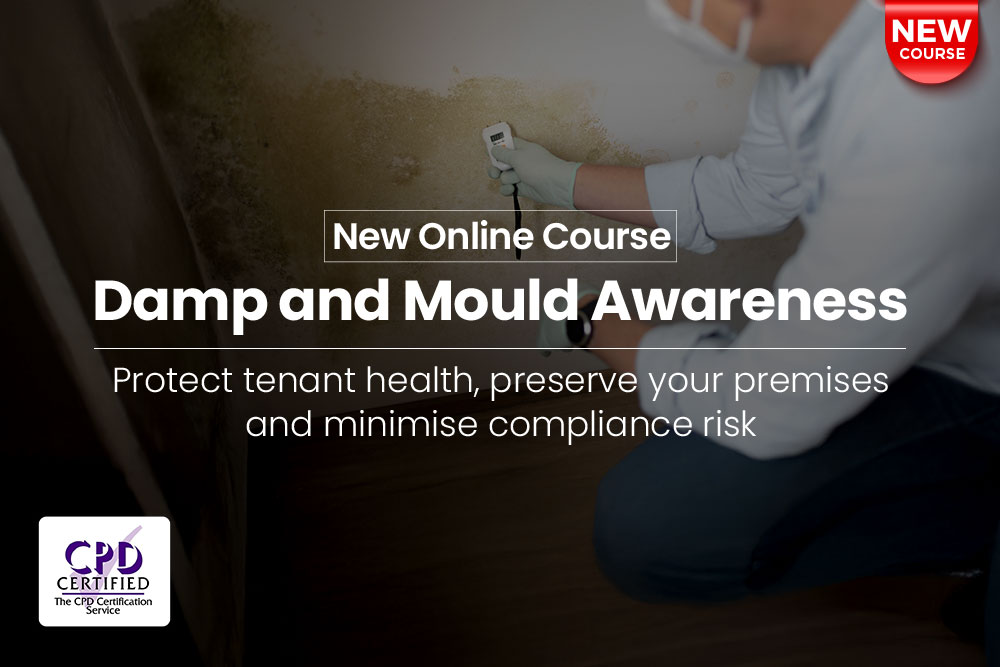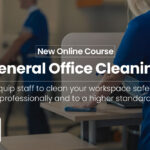
People employed in the cleaning industry face a variety of risks associated with their daily duties. Cleaners are regularly exposed to hazardous chemicals, potentially unsafe working environments, and often use machinery that can be dangerous or cause debilitating conditions.
And as the employers are well aware, it is not just the health and safety of the cleaners themselves that need to be worried about. Clients and the general public also need to be protected from the risk of cleaning activities. Beyond accident and injury, potential incidents expose employers to costly claims, lost clients and irreparable damage to their reputation.
Fortunately, many of these risks can be avoided if their employers implement appropriate health and safety measures, perform risk assessments, and provide adequate training for their staff. Employers have both a legal obligation and a moral responsibility to do so.
Health & Safety in the Cleaning Industry
According to the British Cleaning Council, approximately 1.63 million people are employed in the UK cleaning industry. This figure makes up 5% of the British workforce and positions the cleaning industry as one of the top ten employers in the UK.
The Health and Safety Executive (HSE) has estimated that workplace injuries and illness cost the UK economy £16.2 billion in 2018/19.
When taken together, these figures mean that losses to the UK cleaning industry because of health and safety issues could be in the range of £810 million per year.
More than 3000 work-related injuries in the cleaning industry are reported to the HSE every year. Rampant under-reporting of health and safety incidents could mean that this figure is most likely much higher.
What hazards must cleaners account for
Due to the nature of their work, the equipment and the environments they work in, cleaners and clients are particularly at risk from accident, injury, or illness. For this reason, it is essential that employers provide cleaners with practical health and safety training.
Slips, trips and falls: Slips, trips and falls are the single biggest cause of injury to workers in the UK, according to the HSE. Wet floors, equipment and electrical cabling all pose significant slipping and tripping hazards for cleaners, as well as anyone else in the vicinity of the work.
Claims for this type of injury are one of the common in the UK. Rewards can be in the tens of thousands of pounds.
Hazardous chemicals: Many chemicals used in the cleaning industry contain highly corrosive or carcinogenic ingredients. Improper handling of these hazardous chemicals can cause skin conditions such as dermatitis or allergic reactions. Burns, respiratory problems, and injuries to the eyes are also commonplace.
Machinery and equipment: Cleaners may find that they are required to either use or clean machinery or equipment that is hazardous to their health. Industrial cleaners may have to clean machinery that poses a cutting or crushing hazard.
Machines that are not switched off correctly or are put into use suddenly can cause injuries. Prolonged use of vibrating handheld machinery such as floor buffers can result in conditions such as Hand-Arm Vibration Syndrome (HAVS).
Cleaners also face the risk of electric shock from water or liquids being spilt on electrical appliances or devices.
Manual handling: Pushing equipment for hours on end or having to move large, heavy objects is commonplace for many cleaners. Without the proper manual handling training, cleaners run the risk of back injuries, sprains, strains, and other issues. The repetitive nature of their work can also mean that cleaners face a range of musculoskeletal disorders and injuries.
Unsupervised work environments: Cleaners often work after normal operating hours have finished, so find themselves in unsupervised environments. Since there are no co-workers to provide assistance or first aid if an accident or incident does occur, it may have a more severe impact on a person’s health and wellbeing.
Lone working: Cleaners frequently work alone. This puts that at risk for the hazards of lone working, such as violence and aggression or handling accidents and problems without the aid of a co-worker to assist.
Mental health issues: Stress stemming from overwork, time pressures, shift work, long hours and hazardous working environments can negatively impact the mental health of cleaners. Physical ailments which have arisen as a result of their work can also trigger mental health problems.
What the law says?
By maintaining proper health and safety procedures, you can minimise financial costs to your business. Under UK law, you also have a legal obligation to provide health and safety training to your employees.
All employers in the UK are legally responsible for the health and safety of their employees.
These responsibilities are outlined in the Health and Safety at Work etc Act 1974 and further detailed in the Management of Health & Safety at Work 1999. These pieces of legislation deal with the responsibilities employers have to their employees, to themselves, and to the public.
The Control of Substances Hazards to Health (COSHH) Regulations stipulate that employers must protect workers from substances that are hazardous to their health. Because cleaners often work with hazardous chemicals, COSHH is of particular importance to the industry.
If an employer does not provide adequate health and safety training or comply with their other legal obligations, they can face charges of neglect under section 37 of the Health and Safety at Work etc Act 1974.
Furthermore, it has been determined that employers cannot avoid these charges if they have construed to organise their business in such a way as to leave them ignorant of a health and safety breach. Employers and supervisors can also be held accountable under the Corporate Manslaughter and Corporate Homicide Act 2007.
All charges stemming from an employer’s breach of their health and safety obligations can result in heavy fines or imprisonment.
What are the legal duties of the employers of cleaners?
To ensure they are doing their duty, employers of cleaners must assess the risk that cleaners face and ensure proper controls are in place. A risk assessment must be conducted. Where there are five or more employees, this must be recorded.
A vital risk control will be providing adequate health and safety training for their employees. Employees must be aware of risks in the workplace, what has been done to protect themselves and others, and what they must do to stay safe.
Managing the Risks
These are not just legal duties, but they also make good business sense. By prioritising health and safety training and performing risk assessments, employers can significantly cut the costs associated with employee accidents and illnesses.
Workplaces that have the proper health and safety procedures have less downtime from illness or injury. The benefits of improving health and safety procedures are not just financial. Safe workplaces enhance employee morale and increase job satisfaction. This can lead to better productivity, enhanced loyalty and improve the overall quality of work.
How to Conduct a Risk Assessment for Cleaners
Because people involved in the cleaning industry often work in a wide range of environments and use a variety of hazardous chemicals and equipment, risk assessments are crucial.
Risk assessments should be done on both the work activity itself and the environment in which the work is taking place.
Risk assessments should be conducted according to the below hierarchy:
Identify and eliminate the risk: The first tier in the risk assessment hierarchy is to identify and eliminate the risk. Employers must act together with their employees to detect risks in the workplace and find ways to eliminate them where it is reasonably possible to do so.
For instance, when operating a rotary floor machine, there are mechanical risks, electrical hazards and hazardous substances involved, as well as the risk of slips, trips and falls.
Determine who is at risk and act to reduce exposure: Next, employers must ascertain who is at risk of harm. This may include all staff, certain staff members, contractors, and members of the public.
If complete elimination of the risk is not possible, the next step is to attempt to reduce the exposure. This can be done by putting a time limit on certain tasks, or by having employees alternate between tasks.
Safe Systems of Work: The next preferred method of reducing risk is to implement Safe Systems of Work (SSoW). In simple terms, this means developing and implementing the safest possible method of performing a task.
Employees should be properly trained on how to follow any SSoW you have provided for each cleaning task they undertake.
Personal Protective Equipment (PPE): The last tier in the risk assessment hierarchy is the use of PPE. This is the least preferred method of minimising risk since PPE is not always effective in combating hazards.
Risk assessments must be continually reviewed and updated as changes to the workplace occur. It is recommended that a risk assessment be reviewed at least once per year. Any changes to workplace procedures should be recorded.
There are many risks associated with working in the cleaning industry. However, by working together, employers and employees can reduce the dangers they face. Undertaking accredited health and safety training is the first step towards creating a safer, happier, and more productive workplace.
Resources for cleaners
Human Focus offers an extensive library of health and safety e-learning training for cleaners. The courses are RoSPA assured and can be completed on any device. The programmes are designed to work hand-in-hand with practical face to face training. They provide guidance on the equipment, hazards, and steps for setting up, conducting and completing cleaning tasks.




















































































































































































































































































































































































































































































































































































































































































































































